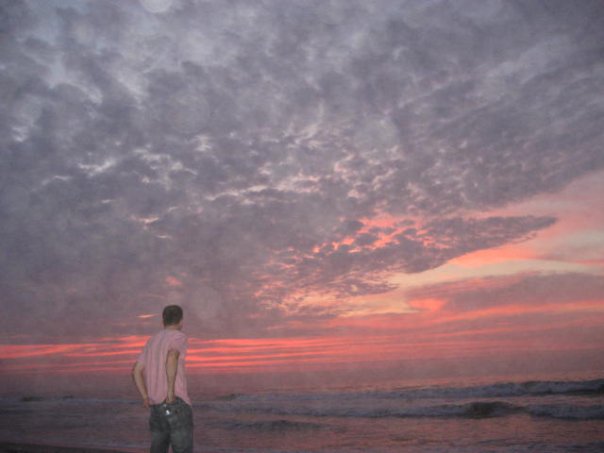
Just a museum nerd trying to figure out his place in the universe. Or is it multiverse? Either way - these are the things that keep me connected.
Catching Elephant is a theme by Andy Taylor
On obsessiveness and voting
Hi. So when I was 18, and 20, and 22, I did not vote.
I was really scared of voting.
I’m always kind of overwhelmed by new situations, and voting seemed truly terrifying: 1. There are strangers there; 2. I wasn’t sure if some of those strangers would try to keep me from voting; 3. I might have…
What moth is this?
I found this moth near the Hudson River in New York State. I thought it was a Hebrew, but the internet has confused me and I’ve found a few look alikes, including the Black Arches. Any insights?

A visual compendium of bioluminescent creatures by Seattle-based artist Eleanor Lutz, reminiscent of Ernest Haeckel’s pioneering drawings from the early 1900s. Also available as a poster.
Pair with the first poem published in a scientific journal, an ode to bioluminescence.
(via Visually)
Let it glow!
What’s your favorite?
A couple months ago I shared some GIFs of invisible things, and I finally got around to putting them together in this video:
When light travels through areas of different air density, it bends. You’ve probably noticed the way distant pavement seems to shimmer on a hot day, or the way stars appear to twinkle. You’re seeing light that has been distorted as it passes through varying air densities, which are in turn created by varying temperatures and pressures.
Schlieren Flow Visualization can be used to visually capture these changes in density: the rising heat from a candle, the turbulence around an airplane wing, the plume of a sneeze … even sound. Special thanks to Mike Hargather, a professor of mechanical engineering at New Mexico Tech, who kindly provided a lot of these videos.
I’m totally Schlieren right now. Amazing sights of sounds.
Here’s PHD Comics with a great explanation of the HUUUUGE physics news this week.
Something beautifully simple about a cosmic explanation in comic form.

Col. Chris Hadfield loves Crash Course, and Crash Course loves Chris Hadfield!
A scientific colleague tells me about a recent trip to the New Guinea highlands where she visited a stone age culture hardly contacted by Western civilization. They were ignorant of wristwatches, soft drinks, and frozen food. But they knew about Apollo 11. They knew that humans had walked on the Moon. They knew the names of Armstrong and Aldrin and Collins. They wanted to know who was visiting the Moon these days. - Carl Sagan
Sunlight on the Moon
The moon orbits the earth with a period of four weeks ( a month) and during the orbit it always has the same side facing the earth. So this means that on the moon there is day and night, but they are both two weeks long instead of 24 hours.
The Moon’s daylight is brighter and harsher than the Earth’s. There is no atmosphere to scatter the light, no clouds to shade it, and no ozone layer to block the sunburning ultraviolet light.
The nights are also brighter, at least on the side of the Moon near to us. The night is lit up by sunlight reflected from Earth, while the night on Earth is lit up by sunlight reflected from the Moon. Earth is much bigger than the Moon, and Earth is also more reflective (with its clouds and oceans, it reflects more light than the dark Moon rocks). Earthlight on the Moon is much brighter than Moonlight on the Earth.
Credit: Jeff Silvis and David Palmer
Happy 88th birthday to Scott Carpenter, a member of the “Mercury 7,” America’s first group of astronauts.
An awesome guy, who has adventures above the clouds and below the sea.


